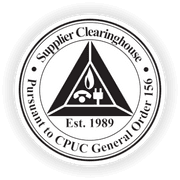The benefits of having a diverse team in the workplace are undeniable, with greater creativity, innovation, and long-term business profits. But without an effective strategy for implementing inclusion, diversity can actually create more conflicts and misunderstandings amongst employees in your company. So how can an organization effectively reach their goal of diversity without taking a toll on their teams?
One of the concerns we hear from clients when discussing a workplace diversity strategy is the risk of disrupting the status quo and affecting team cohesion. After all, people from diverse backgrounds come to the workplace with different preconceived notions about gender, sexual orientation, or ethnicities. They may have varying communication styles or expectations about workplace policies.
With such stark differences, some may look at the potential conflict that arises from diversity when weighing out their goals and wonder, “Is implementing diversity really worth it?” Some may point to a homogeneous workplace — such as a predominantly white, male organization in Tampa — as a shining example for team cohesion since it doesn’t have any of the drawbacks of diversity.
But the reality is, though the homogenous workplace may be harmonious, it isn’t getting the benefits of diversity by preserving the status quo either. The problem for many workplaces is that they’ve hired people of different backgrounds – but they haven’t gone beyond that. To fully achieve the benefits of diversity, an organization needs to implement a diversity program where leaders get trained to effectively manage people from different backgrounds. Otherwise, you’ll be at risk of getting all the conflict that comes with diversity, without all the benefits.
We’ve created a series of Inclusive Leadership programs to help organizations go beyond the hiring process and train leaders with the skills they need to foster synergy amongst team members. Our customized program has leaders move through Orange Grove Consulting’s taxonomy of inclusive, 21st century leadership, which measures and tracks inclusive leadership skillset development every step of the way. The leadership taxonomy, which begins at diversity awareness and culminates in a synthesis of skills, helps organizations to evaluate where their leaders are, how well their skills are developing, and what more needs to be done.
The goal of the training is to ultimately have leaders create a workplace culture which fosters psychological safety and where people from all backgrounds feel supported in speaking up and learning together. Leaders will be able to better understand their own biases and foster empathy when interacting with their team members, using conflict management and active listening to navigate any issues that may arise.
It may take some extra investment to overcome the initial differences amongst team members, but with the proper inclusion training, your organization will be on your way to reaping the bottom line business benefits that come with diversity.
To learn more about our Inclusive Leadership programs, check out our Inclusive Leadership programs and attend our July 15th Inclusive Leadership Q&A webinar.
Contact Us




